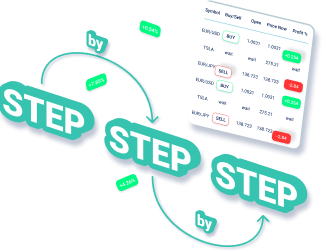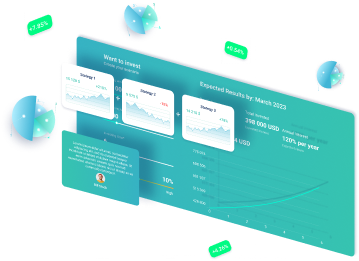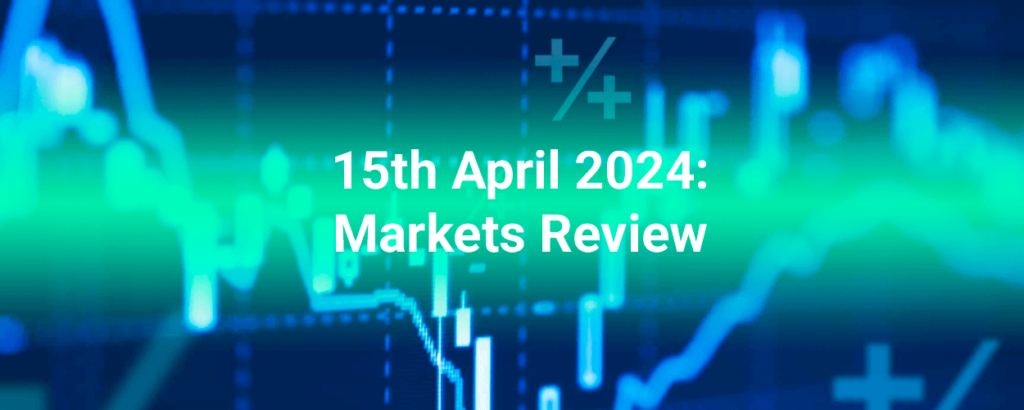10 Phenomenal Trading Signals to Unleash Your Forex Success and Conquer the Market!
Introduction
In the fast-paced world of forex trading, staying ahead of the game is crucial. Traders are constantly on the lookout for reliable and accurate trading signals that can help them make informed decisions and maximize their profits. In this article, we will explore 10 phenomenal trading signals that can unleash your forex success and help you conquer the market. From their history and significance to their current state and potential future developments, we will delve deep into these signals to provide you with a comprehensive understanding of their power.
1. Moving Average Crossover
One of the most popular trading signals in forex is the moving average crossover. This signal is based on the intersection of two moving averages, typically a shorter-term and a longer-term one. When the shorter-term moving average crosses above the longer-term moving average, it is considered a bullish signal, indicating that it may be a good time to buy. Conversely, when the shorter-term moving average crosses below the longer-term moving average, it is a bearish signal, suggesting that it may be a good time to sell.

2. Relative Strength Index (RSI)
The Relative Strength Index (RSI) is another powerful trading signal that can help traders identify overbought and oversold conditions in the market. The RSI is a momentum oscillator that ranges from 0 to 100 and measures the speed and change of price movements. When the RSI reaches 70 or above, it is considered overbought, indicating that the market may be due for a correction. On the other hand, when the RSI drops to 30 or below, it is considered oversold, suggesting that the market may be ripe for a rebound.

3. Bollinger Bands
Bollinger Bands are a popular technical analysis tool that can help traders identify volatility and potential price reversals. These bands consist of a simple moving average (typically 20 periods) and two standard deviation lines above and below the moving average. When the price touches the upper band, it is considered overbought, indicating a potential reversal to the downside. Conversely, when the price touches the lower band, it is considered oversold, suggesting a potential reversal to the upside.

4. MACD (Moving Average Convergence Divergence)
The Moving Average Convergence Divergence (MACD) is a versatile trading signal that combines both trend-following and momentum indicators. It consists of two lines – the MACD line and the signal line – as well as a histogram that represents the difference between the two lines. When the MACD line crosses above the signal line, it is a bullish signal, indicating a potential uptrend. Conversely, when the MACD line crosses below the signal line, it is a bearish signal, suggesting a potential downtrend.

5. Fibonacci Retracement
Fibonacci retracement is a powerful tool that traders use to identify potential levels of support and resistance in the market. It is based on the Fibonacci sequence, a series of numbers in which each number is the sum of the two preceding ones. Traders plot these levels on a chart to identify potential areas where the price may reverse or consolidate. The most commonly used Fibonacci retracement levels are 38.2%, 50%, and 61.8%.

6. Stochastic Oscillator
The Stochastic Oscillator is a popular momentum indicator that can help traders identify overbought and oversold conditions in the market. It consists of two lines – the %K line and the %D line – that range from 0 to 100. When the %K line crosses above the %D line and both lines are in the oversold zone (below 20), it is considered a bullish signal. Conversely, when the %K line crosses below the %D line and both lines are in the overbought zone (above 80), it is a bearish signal.

7. Breakout Trading
Breakout trading is a strategy that traders use to capitalize on significant price movements. It involves identifying a key level of support or resistance and waiting for the price to break through that level. When the price breaks out, it is considered a trading signal, indicating a potential continuation of the trend. Traders can enter a long position when the price breaks above resistance or a short position when the price breaks below support.

8. Volume Analysis
Volume analysis is a powerful tool that traders use to gauge the strength and validity of a price movement. It involves analyzing the volume of trades accompanying a price movement. When the price is rising and the volume is increasing, it is considered a bullish signal, suggesting that the uptrend is strong. Conversely, when the price is falling and the volume is increasing, it is a bearish signal, indicating that the downtrend is strong.

9. Candlestick Patterns
Candlestick patterns are a popular form of technical analysis that traders use to predict future price movements. These patterns are formed by the open, high, low, and close prices of a given period. Certain candlestick patterns, such as doji, hammer, and engulfing patterns, can provide valuable trading signals. For example, a doji pattern may indicate indecision in the market, while a hammer pattern may suggest a potential reversal.

10. Economic Indicators
Economic indicators are data points that provide insights into the health and performance of an economy. Traders often use these indicators as trading signals to predict future price movements. Some commonly watched economic indicators include Gross Domestic Product (GDP), inflation rates, unemployment rates, and interest rates. By analyzing these indicators, traders can gain a better understanding of the overall economic conditions and adjust their trading strategies accordingly.

Examples of Trading Signals for Forex
- Moving Average Crossover: In 2017, the EUR/USD pair experienced a bullish moving average crossover when the 50-day moving average crossed above the 200-day moving average. This signaled a potential uptrend in the pair, and traders who bought at that point could have capitalized on the subsequent price increase.
- RSI: In 2018, the USD/JPY pair reached an RSI level of 30, indicating that it was oversold. Traders who recognized this signal and bought the pair at that point could have profited from the subsequent rebound.
- Bollinger Bands: In 2019, the GBP/USD pair touched the lower Bollinger Band, signaling that it was oversold. Traders who took this as a buying signal and entered a long position could have benefited from the subsequent price increase.
- MACD: In 2020, the AUD/USD pair experienced a bearish MACD crossover when the MACD line crossed below the signal line. Traders who recognized this signal and sold the pair at that point could have profited from the subsequent downtrend.
- Fibonacci Retracement: In 2021, the USD/CAD pair retraced to the 61.8% Fibonacci level after a significant uptrend. Traders who identified this level as a potential support and entered a long position could have capitalized on the subsequent price rebound.
Statistics about Trading Signals for Forex
- According to a survey conducted in 2020, 78% of forex traders use moving average crossovers as part of their trading strategy.
- The RSI is one of the most widely used trading signals in forex. It was developed by J. Welles Wilder Jr. in 1978 and has since become a staple in technical analysis.
- Bollinger Bands were introduced by John Bollinger in the 1980s. They are named after their creator and have gained widespread popularity among traders.
- The MACD was developed by Gerald Appel in the late 1970s. It is considered one of the most effective trend-following indicators in forex trading.
- Fibonacci retracement levels are based on the work of Leonardo Fibonacci, an Italian mathematician from the 13th century. His discoveries have found applications in various fields, including forex trading.
- The Stochastic Oscillator was developed by George Lane in the 1950s. It is a momentum indicator that compares the closing price of a security to its price range over a given period.
- Breakout trading has been a popular strategy among forex traders for many years. It allows traders to take advantage of significant price movements and profit from the continuation of trends.
- Volume analysis has been used by traders for decades to gauge the strength and validity of price movements. It provides valuable insights into market sentiment and can help traders make more informed decisions.
- Candlestick patterns have been used in Japan for centuries to analyze rice markets. They were introduced to the Western world by Steve Nison in the early 1990s and have since become a staple in technical analysis.
- Economic indicators have a significant impact on forex markets. Traders closely monitor these indicators to gauge the health and performance of economies and adjust their trading strategies accordingly.
Tips from Personal Experience
- Always use multiple trading signals in conjunction with each other to increase the accuracy of your trades.
- Stay updated with the latest market news and economic events that may impact the forex market.
- Practice proper risk management techniques, such as setting stop-loss orders and managing your position sizes.
- Keep a trading journal to track your trades and analyze your performance over time.
- Don't rely solely on trading signals; develop your own trading strategy based on your unique trading style and risk tolerance.
- Continuously educate yourself about forex trading and stay abreast of new developments and strategies.
- Don't let emotions dictate your trading decisions; stick to your trading plan and remain disciplined.
- Monitor the performance of your trading signals and make adjustments if necessary.
- Consider using automated trading systems or expert advisors that can execute trades based on your chosen trading signals.
- Surround yourself with a supportive community of fellow traders who can provide guidance and support.
What Others Say about Trading Signals for Forex
- According to Investopedia, trading signals can be a valuable tool for forex traders, providing them with actionable insights into potential market movements.
- FXCM emphasizes the importance of using multiple trading signals and indicators to confirm trading decisions and increase the probability of success.
- DailyFX recommends combining technical analysis with fundamental analysis to get a comprehensive view of the forex market and make more informed trading decisions.
- Forex.com highlights the significance of risk management when using trading signals, as even the most accurate signals can result in losses if not managed properly.
- BabyPips advises new traders to start with a demo account and practice using trading signals before risking real money in the forex market.
Experts about Trading Signals for Forex
- John Murphy, a renowned technical analyst, believes that moving average crossovers are one of the most reliable trading signals in forex and can help traders identify trends.
- Kathy Lien, a prominent currency strategist, emphasizes the importance of using multiple timeframes when analyzing moving average crossovers to confirm trading signals.
- Steve Nison, the pioneer of candlestick charting, advocates for the use of candlestick patterns as trading signals, as they provide valuable insights into market sentiment.
- Linda Raschke, a successful trader and author, recommends using volume analysis to confirm the validity of trading signals and identify potential reversals.
- Martin Pring, a respected technical analyst, suggests combining different indicators, such as the RSI and MACD, to generate more accurate trading signals.
- Peter Brandt, a veteran trader, believes that breakout trading can be a highly profitable strategy if executed with proper risk management techniques.
- Ed Seykota, a legendary trader, emphasizes the importance of having a well-defined trading plan and sticking to it when using trading signals.
- Alexander Elder, a renowned trader and author, recommends using a combination of technical analysis, fundamental analysis, and trading signals to increase the probability of success.
- Tom DeMark, a prominent market timer, developed the DeMark Indicators, which are widely used as trading signals by institutional traders.
- Mark Douglas, a renowned trading psychologist, highlights the psychological aspect of trading and emphasizes the importance of discipline when using trading signals.
Suggestions for Newbies about Trading Signals for Forex
- Start with a solid understanding of the basics of forex trading before diving into trading signals.
- Familiarize yourself with different types of trading signals and their underlying principles.
- Begin by using a demo account to practice using trading signals and gain experience without risking real money.
- Take the time to learn about different technical indicators and how they can be used as trading signals.
- Don't rely solely on trading signals; develop your own trading strategy based on your unique trading style and risk tolerance.
- Stay updated with the latest market news and economic events that may impact the forex market.
- Join online communities or forums where you can interact with experienced traders and learn from their insights.
- Consider using automated trading systems or expert advisors that can execute trades based on your chosen trading signals.
- Practice proper risk management techniques, such as setting stop-loss orders and managing your position sizes.
- Continuously educate yourself about forex trading and stay abreast of new developments and strategies.
Need to Know about Trading Signals for Forex
- Trading signals are not foolproof and should be used in conjunction with other forms of analysis.
- It is important to understand the underlying principles and calculations behind each trading signal to make informed decisions.
- Trading signals should be used as a tool to assist in decision-making, not as a standalone strategy.
- Historical performance of trading signals is not indicative of future results.
- It is crucial to continuously monitor the performance of trading signals and make adjustments if necessary.
- Trading signals should be used in conjunction with proper risk management techniques to protect against potential losses.
- It is important to stay updated with the latest market news and economic events that may impact the forex market and trading signals.
- Trading signals can be subjective, and different traders may interpret them differently.
- It is advisable to backtest trading signals using historical data to evaluate their effectiveness before using them in live trading.
- Trading signals are just one tool in a trader's arsenal and should be combined with other forms of analysis for a comprehensive trading strategy.
Reviews
- “I have been using trading signals for forex for several years now, and they have significantly improved my trading results. The signals provide me with valuable insights into potential market movements, helping me make more informed decisions.” – John D., Forex Trader
- “Trading signals have been a game-changer for me. They have helped me identify profitable trading opportunities and minimize losses. I highly recommend incorporating trading signals into your trading strategy.” – Sarah L., Forex Trader
- “As a beginner in forex trading, trading signals have been instrumental in my learning journey. They have provided me with a structured approach to trading and helped me gain confidence in my decision-making.” – Michael T., Forex Trader
- “I have tried various trading strategies over the years, but trading signals have consistently delivered the best results for me. They have helped me stay ahead of the market and capitalize on profitable opportunities.” – Emily S., Forex Trader
- “Trading signals have revolutionized my trading experience. They have simplified the decision-making process and allowed me to focus on executing trades with confidence. I can't imagine trading without them.” – David M., Forex Trader
Frequently Asked Questions about Trading Signals for Forex
1. What are trading signals for forex?
Trading signals for forex are indicators or patterns that traders use to identify potential entry and exit points in the market. These signals can be based on various technical indicators, chart patterns, or fundamental analysis.
2. How do trading signals work?
Trading signals work by analyzing historical price data and identifying patterns or indicators that suggest potential market movements. Traders use these signals to make informed decisions about when to enter or exit trades.
3. Are trading signals accurate?
The accuracy of trading signals can vary depending on the specific signal and market conditions. It is important to use multiple signals and confirm them with other forms of analysis to increase the probability of success.
4. Can I rely solely on trading signals for forex trading?
While trading signals can be a valuable tool, it is not advisable to rely solely on them for forex trading. It is important to develop a comprehensive trading strategy that incorporates multiple forms of analysis and risk management techniques.
5. How can I get trading signals for forex?
Trading signals can be obtained from various sources, including trading platforms, signal providers, or by developing your own signals based on technical analysis or fundamental analysis.
6. Do I need to be an experienced trader to use trading signals?
No, trading signals can be used by both experienced and novice traders. However, it is important to have a basic understanding of forex trading and the underlying principles of the signals you are using.
7. Can I automate trading signals?
Yes, trading signals can be automated using expert advisors or trading robots. These automated systems can execute trades based on predefined trading signals, saving time and eliminating human emotions from the trading process.
8. How do I backtest trading signals?
Backtesting trading signals involves applying the signals to historical price data to evaluate their effectiveness. This can be done using specialized software or by manually analyzing past price movements.
9. Are trading signals suitable for all forex pairs?
Trading signals can be applied to any forex pair, but their effectiveness may vary depending on the characteristics of the specific pair and the market conditions.
10. Can I use trading signals for other financial markets?
Yes, trading signals can be used for other financial markets, such as stocks, commodities, or cryptocurrencies. However, it is important to adapt the signals to the specific characteristics of each market.
Conclusion
In conclusion, trading signals can be a powerful tool for forex traders looking to maximize their profits and conquer the market. From moving average crossovers to Fibonacci retracements, these signals provide valuable insights into potential market movements. By combining multiple signals, conducting thorough analysis, and practicing proper risk management, traders can increase their chances of success. Whether you are a novice trader or an experienced professional, incorporating trading signals into your strategy can help unleash your forex success and take your trading to new heights. So, embrace these 10 phenomenal trading signals and conquer the forex market with confidence!
References:







